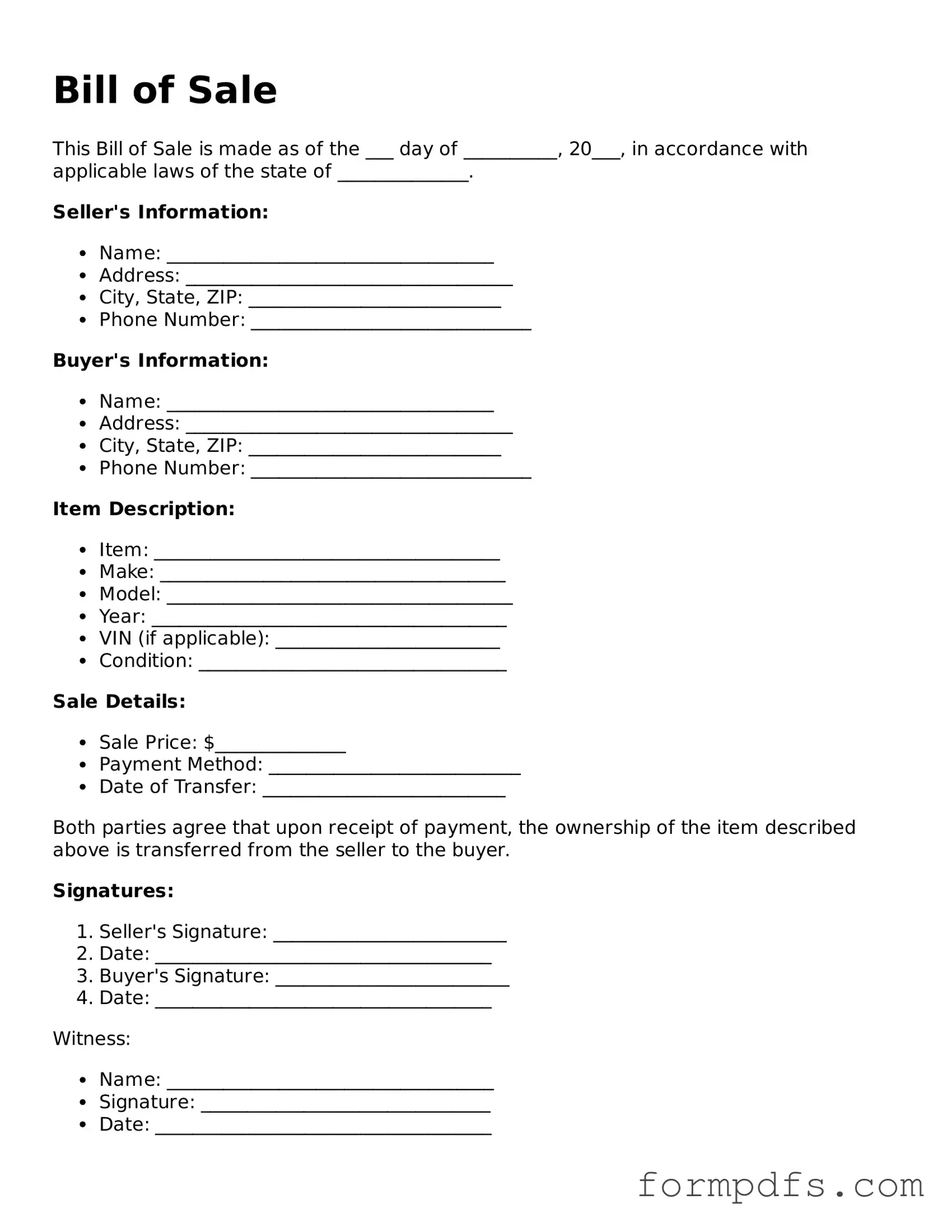What is a Bill of Sale?
A Bill of Sale is a legal document that serves as proof of the transfer of ownership of an item from one party to another. It typically includes details about the item being sold, such as its description, condition, and sale price. This document is essential for both buyers and sellers, as it provides a record of the transaction and can help resolve any disputes that may arise in the future.
When do I need a Bill of Sale?
You should use a Bill of Sale whenever you buy or sell a significant item, such as a vehicle, boat, or large piece of equipment. It's particularly important for transactions involving items that require registration or title transfer. Even for smaller items, having a Bill of Sale can provide peace of mind and clarify the terms of the sale for both parties.
What information should be included in a Bill of Sale?
A comprehensive Bill of Sale should include the following information: the names and addresses of both the buyer and seller, a detailed description of the item being sold (including any serial numbers or identifying marks), the sale price, and the date of the transaction. Additionally, it’s wise to include any warranties or conditions of the sale, as well as signatures from both parties to validate the agreement.
Is a Bill of Sale legally binding?
Yes, a Bill of Sale is legally binding as long as it meets the necessary requirements for a contract. This means that both parties must agree to the terms, and the document must be signed by both the buyer and seller. While it’s a good practice to have the Bill of Sale notarized, it’s not always required. However, having it notarized can add an extra layer of protection for both parties.
